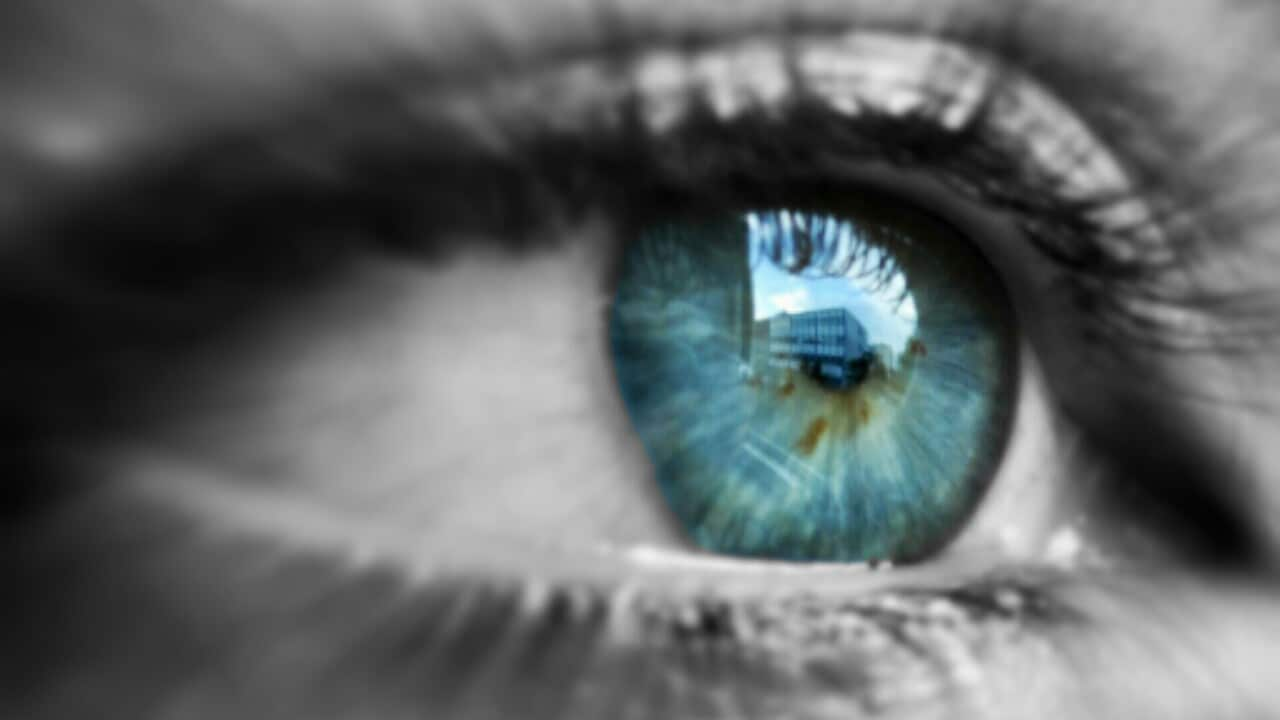You can say a lot with your eyes. In fact, science shows that eye contact is a cornerstone of non-verbal communication between individuals.
The mutual gaze is a “two-way street”, a type of conversation “where each person signals as well as reads gaze information,” write Michelle Jarick and Alan Kingstone in their 2015 research paper, .
Eye contact is undoubtedly important, agrees David Keatley, Director of Researchers in Behaviour Sequence Analysis (ReBSA) at the University of Lincoln, UK. “Eye contact can tell us if someone is listening and attending to us. It can tell us we have their attention. It can then show their emotion – concern, enjoyment, happiness, love,” he says.
It can indicate intimacy; we make more eye contact with people we like and are attracted to.
Research shows that eye contact can signal different things. It can indicate intimacy; we make more eye contact with people we like and are attracted to. One study cited by Jarick and Kingstone found that “[s]trangers have reported feelings of passionate love after spending only two minutes engaged in unbroken eye contact.”
It can also telegraph dominance. Jarick and Kingstone found that individuals in a competitive relationship could maintain eye contact for longer than normal periods. However, when the social relationship was cooperative, eye contact was very difficult to sustain, and talking became very frequent, they write. We hold the gaze of adversaries and lovers longer than friends and strangers.
Eye contact plays an important role in forming and maintaining relationships, particularly in an era when we are guilty of looking at our smartphones more than each other. It could feel special for someone to pay us complete attention, instead of keeping one eye on Facebook on their phone, says Keatley.
It’s a point highlighted looking at the negative effect smartphones are having on the health of teenagers. The writer asks 13-year-old Athena what it feels like when you’re trying to talk to somebody face-to-face and they’re not looking at you. It hurts, she responds. ‘“I could be talking about something super important to me, and they wouldn’t even be listening’.”
Eye contact could also help repair relationships. a new documentary series hosted by Ray Martin and airing on SBS from Wednesday 6 September, explores what happens when two estranged people come face to face – without conversation – to look each other in the eye.
“Given that the core of many breakdowns in relationships is a lack of effective communication," says Keatley, "then eye contact can show a person ‘I am paying attention, I am looking at you, you are the focus of my attention’.” In this way, it can show a person we are interested in them and are ‘hearing’ their message.
Prolonged eye contact between estranged individuals could have a ‘priming’ effect, says the academic. “Priming essentially is a relationship between two associated things,” he explains. “For instance, if I say ‘sleep’ you might think of “bed” – because the two are related. Sleep ‘primes’ the idea of bed.” So if two estranged people are made to look into each other’s eyes, this may prime those long-lost feelings of intimacy. “But, a lot of variables and external factors will contribute to the interpretations of what the stare implies,” he adds.
A good test of this is to show a picture of JUST the eyes, to the eyelids only.
It’s important to remember that eyes are one of many components that constitute non-verbal communication. There is tone, pitch, and speed of speaking, the way we hold our body, even breathing also to consider.
When we read someone’s gaze, we rely on these other elements of non-verbal communication, not just the eyes. “A good test of this is to show a picture of JUST the eyes, to the eyelids only,” says Keatley. “Typically, people are not very effective at interpreting what the eyes suggest.” Show them the entire face and the interpretation is more accurate.
“The eyes, in reality, are a very small part of it,” says Keatley. “I typically teach students that if they focus too much on the eyes, they’ll end up blind to everything else.”
If you need help, or this story has raised issues for you, please call on 13 11 14, or on 1300 364 277.
The ground-breaking new six-part documentary series, , will debut on SBS on Wednesday 6 September at 8.30pm. Each episode, airing weekly on Wednesdays at 8.30pm, will be available to view on SBS On Demand after broadcast.



